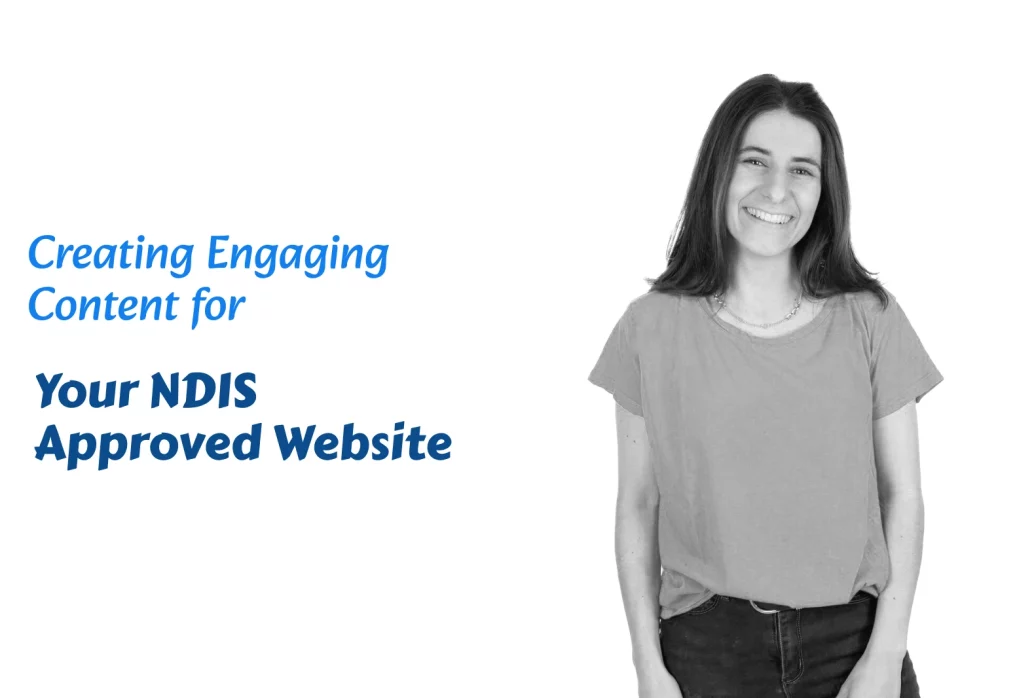Creating Engaging Content for Your NDIS Website
A professional website showcases Engaging Content for Your NDIS Website including the range of services an NDIS provider offers. It enhances credibility and instils confidence among participants.
NDIS participants are often self-managed, which means that their choice of service providers is largely their own decision. This is why it is important to build relationships with potential clients through online channels like social media platforms.
Understanding the NDIS Audience
Achieving success as an NDIS provider requires a deep understanding of your audience and a clear value proposition. This includes identifying the specific benefits that participants will receive from your services, establishing a unique brand identity, and communicating this value to prospective clients.
Use a variety of media formats to connect with your audience. Video content is especially effective for NDIS marketing because it can feature behind-the-scenes footage and testimonials from clients. This type of Engaging Content for Your NDIS Website can also be easily accessed by people with visual or hearing impairments.
Personal stories are another powerful NDIS marketing tool that can emotionally connect with potential participants. These stories can inspire viewers to overcome their own challenges and provide hope for future outcomes. They can also help to establish your business as an expert in the field and break down stereotypes associated with disability.
NDIS providers can also connect with their audience by listing their business on online directories and referral platforms. By regularly updating these listings, NDIS providers can stay up-to-date as an effective strategy with the latest information and provide relevant and accurate details about their services.
The Art of Storytelling
Storytelling is an art form that involves the presentation of a narrative. While some other art forms such as poetry recitation and stand-up comedy sometimes present stories, they do not necessarily include the other four storytelling components.
The narrative style is a way of unifying distinct events through a central concept or idea. It can be true or fictional and may include a climax or denouement. Using a narrative style allows you to captivate the audience’s attention and inspire them to act or change.
The digital style of storytelling focuses on conveying the tale through a variety of media, including videos and images. This is arguably the most effective and emotionally engaging method of storytelling.
Multimedia Integration
Static infographics are a dime a dozen on the internet, so creating an interactive version of your content can help you stand out from the crowd. Interactive elements like calculators and quote tools pique your audiences’ interest while also helping them solve a problem, such as determining the cost of car insurance or how much they can save by choosing an extended warranty for their new electronics.
Interactive quizzes and surveys are another way to create engagement. These are easy to integrate into existing types of content for NDIS Websites, such as video reels and videos, and can offer a more personal and engaging experience for your audience.
Take the time to consider your budget and resources before planning a piece of interactive content. You want to make sure the Engaging Content for Your NDIS Website can be developed without too much of expenses or requiring complex software, as this could limit its effectiveness and reach. Also, be sure to have a responsive web design for NDIS Provider in place, since interactive assets often require buttons and animations that respond to user interactions.
Interactive Content for Engaging Content for Your NDIS Website
Creating interactive content for your NDIS website can be a great way to engage with potential clients. By using video, infographics and text posts, you can provide useful tips and resources to your target audience while also positioning yourself as an expert in the field.
You can also share testimonials and success stories to encourage people to take the initiative to access your services. These can be in the form of photos, videos and even written testimonies. Using images and video interviews is a great way to make your content more engaging for those with visual impairments. For example, Wellways shares videos of their volunteers talking about their experience as a volunteer for the organisation which helps them connect with prospective and current participants.
Another way to increase your reach on social media is by posting regular updates about your NDIS services and the industry. This can include information about new policies and developments that may affect your client base. It’s important to remember that social media is a two-way conversation so be sure to respond to comments and address any concerns from your audience.
Showcasing Testimonials and Success Stories as Engaging Content for Your NDIS Website
Whether you offer support coordination, community participation or home and garden services, testimonials are a powerful way to build trust with potential participants. By showcasing your past clients’ stories on your website, you can establish yourself as an expert in the field and attract more clients.
One of the best way as digital marketing strategy for NDIS providers is to use targeted online advertising campaigns to reach specific demographics. This can be done through platforms such as Google Ads, social media, and email. A qualified web & digital marketing agency for NDIS providers can help you create eye-catching templates and develop custom content to ensure that your campaign is successful.
Updates and News in the NDIS World
The NDIS has a number of changes in store that will improve participants’ experiences with the scheme. One of these is the NDIS Participant Service Guarantee, which will set new standards for how long it takes to get a decision on NDIS coverage, a plan and a review.
Disability support providers must continue to provide quality services while working within the NDIS cost cap. They also need to be able to deliver the necessary supports to participants as quickly as possible.
Content Accessibility
For NDIS providers, content needs to be accessible to a wide range of people. This includes those with cognitive, physical and sensory impairments. It also means avoiding potentially triggering images, videos or other content. For example, a website catering to trauma survivors would take extra care not to use any content that could trigger an anxiety attack or evoke a physical reaction.
Another way to increase accessibility is to use live filters and other ways to provide relevant results based on user searches. This can be particularly helpful for people with cognitive disabilities, as it allows them to navigate websites more easily. It’s also good to ensure that your Engaging Content for Your NDIS Website is properly optimised for SEO (search engine optimization), so that search engines can find your NDIS services and connect you with potential clients.
This means using alt text to describe visual elements, allowing for transcripts of your NDIS videos and providing links that are associated with each other within a paragraph or list. It also involves making sure that your NDIS site follows Web Content Accessibility Guidelines for NDIS Providers Website, which are designed to help those with visual impairments.
Encouraging Community Participation
Many communities can get complacent and lose the sense of urgency to contribute. This is why community participation should be encouraged with an integrated communications strategy for NDIS Providers that uses all possible channels to connect with participants, nominees, families and support coordinators.
One great way to do this is through email marketing, which allows you to send personalised messages that keep your audience engaged. Another is by organising community engagement in person, like town hall meetings or exhibitions.
Providing incentives like giveaways or offering special privileges to your most active members is also a great way to encourage more community involvement. But it is important to balance these incentives with rules that prevent community content from getting out of hand.
It is also important to give community members a clear blueprint on how to use your community’s features. This reduces confusion and improves productivity. Additionally, it is helpful to have a point of contact for new members who may have questions or concerns. This can be yourself or another member of the community.

